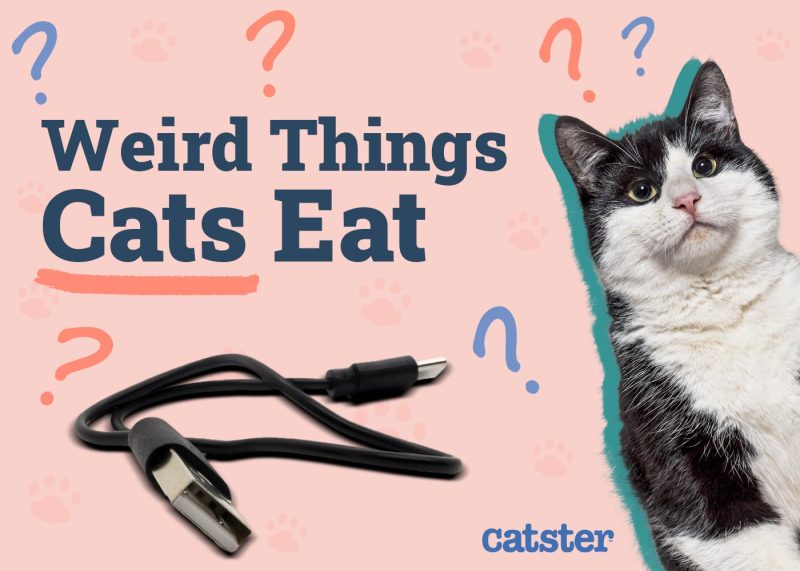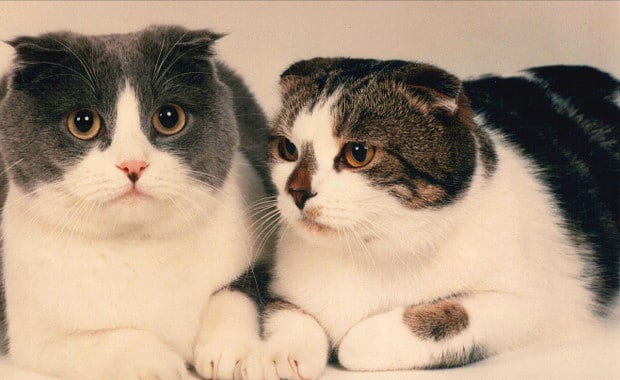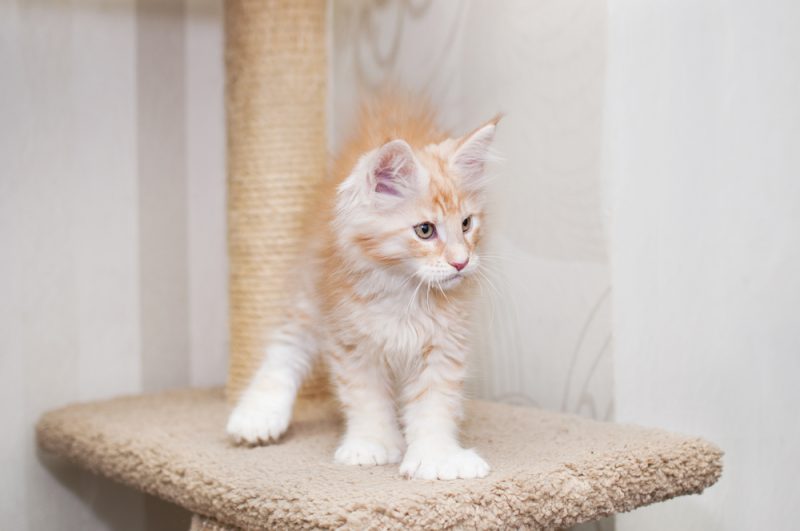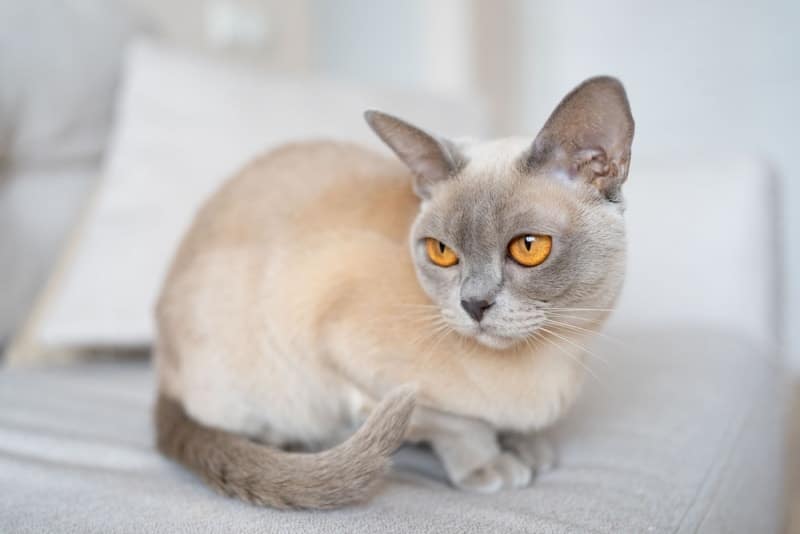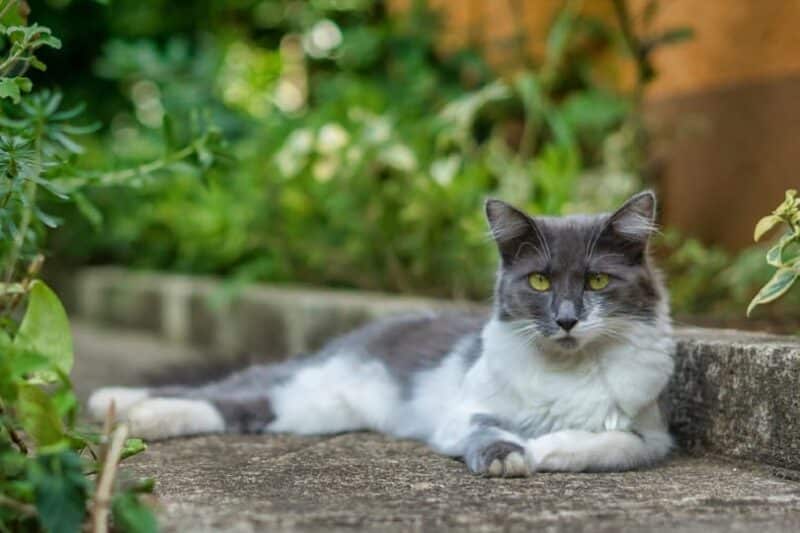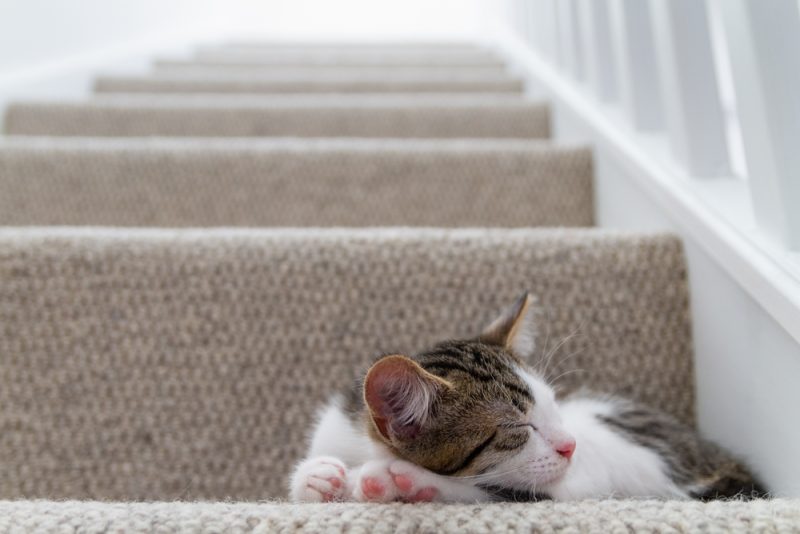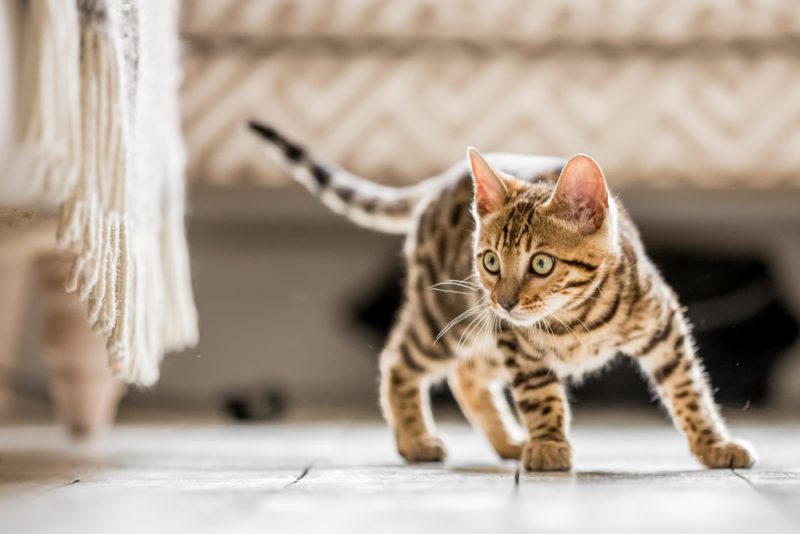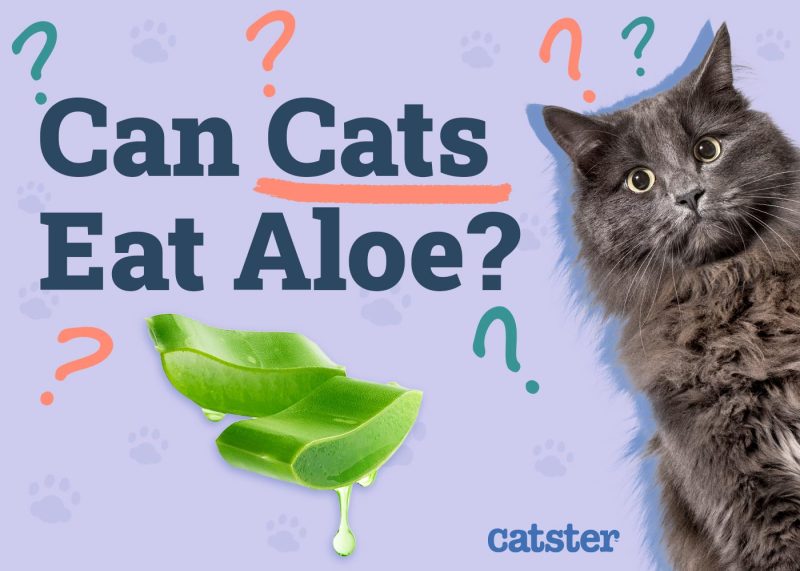It’s normal for cats to eat weird and wonderful things, but just because it would be weird—and gross—for us to consume doesn’t mean that your cat feels the same way. Things like mice, birds, bugs, and lizards are easy prey for your cat and activate their hunting instincts. Your cat might even bring you their catch as a gift or because they’re trying to teach you how to hunt. They might even be leaving their catch with you to come back to it later.
However, it becomes concerning when your cat turns to inedible objects to munch on as these preferences are abnormal, could be harmful to your cat, and could be an indication that your cat has an underlying health issue.

Does My Cat Have Pica?
Strangely, it’s quite common for cats to show interest in and eat nonfood items. This compulsive urge is called pica. Cats that lick or suck on inedible objects and materials have a mild case of pica, while those that actually consume the object have a more severe case. A lack of vitamins or minerals in your cat’s food, hunger, lack of fiber, learned behavior, boredom, anxiety, attention-seeking, genetic disposition, and certain illnesses can cause this behavior in cats. Sometimes, there is no known cause.
The reason severe cases of pica are so concerning is because those cats are eating things they shouldn’t, such as plants and indigestible objects. These can be toxic to them and make them very sick. It can also cause choking and intestinal blockages that may require surgery to remove. If your cat is eating weird things that are abnormal, take them to the vet to figure out what is causing the behavior and whether your cat needs treatment to resolve it.
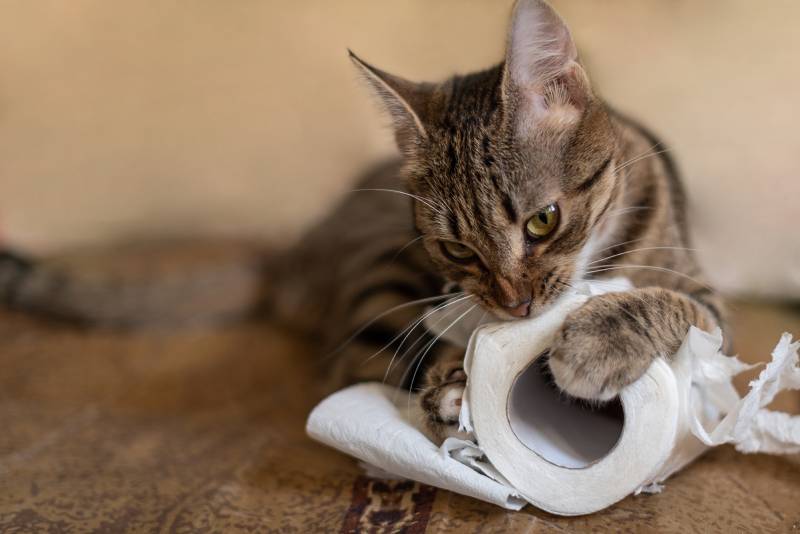

The 6 Weird Things Cats Eat
1. Plant Material
Cats are obligate carnivores, which means that they get the majority of their nutrients from animal meat, not from fruits and vegetables. Although it isn’t uncommon for cats to nibble on grass and plants, it is weird. Cats often eat plants that sway and wiggle in the wind because the motion activates their prey drive and causes them to swat, chase, and bite into them, as they do with their feather wands, strings, and balls.
It is theorized that cats may also eat plants or grass when they have gastrointestinal problems because it can help alleviate the symptoms, fill the stomach up, or induce vomiting, which helps them feel better. Your cat may also eat some grass when they’re hungry or need to get some trace nutrients. If your cat likes to eat your plants, make sure you only have non-toxic types in your home.
2. Cords
Although chewing on anything inedible can pose a risk to your cat, it is particularly dangerous when a cat becomes obsessed with chewing your cords and wires. Not only does it cause a hassle for you, but your cat can get electrocuted by doing so. It can also cause fires in your home, which puts your household in danger.
It’s normal for kittens to chew on anything they can find, but it’s important to correct the behavior early by redirecting their attention to their toys and safer objects that you’re happy for them to play with.
If you have a cat with a cord obsession, remove those cords from places your cat can access. Otherwise, you may need to cover your cords in a cat-friendly substance that deters your cat because they don’t like the taste or scent. If nothing helps, you’ll need to chat with a vet about your cat’s obsession and ways to prevent their behavior.
If you need to speak with a vet but can't get to one, head over to PangoVet. It's an online service where you can talk to a vet online and get the advice you need for your pet — all at an affordable price!

3. Toys
Your cat’s toys are there to be played with, which will include biting and licking. They’ll excitedly run after, chase, and attack strings, feathers, and even shoelaces. However, it isn’t normal for your cat to eat these items. If your cat does, you’ll need to swap their toys out with sturdy options that can’t tear apart or be swallowed.
Instead of toys with feathers and strings, you can play with and exercise your cat with a laser, as cats love to chase after the red dot. You can still bring softer types of toys out for your cat to play with, but only under your supervision. When you’re not around, you can leave your cat with toys they can chew on that are non-toxic and safe. Dog toys are a good alternative for cats with pica because they tend to be more durable and can withstand your cat’s teeth.
4. Materials
If your cat is sucking your blankets, there usually isn’t anything to worry about, and it could be their way of self-soothing. However, if your cat is doing more than sucking your blankets, clothes, socks, and other fabrics around the home and is chewing on and swallowing them, something that needs to be done. Firstly, take your cat to the vet because your cat is showing signs that something is not right.
Secondly, take preventative measures by hanging up or folding all your clothes behind a closed cupboard. You could also implement a no-go zone and train your cat to stay out of your bedroom, where most blankets and clothing are located. Keep the areas your cat is allowed to play in free from materials and add more toys and obstacles to them to keep your cat stimulated.

5. Cat Litter
Most cat litter consists of unusual textures that may spark your cat’s curiosity. Some natural litters have a woodsy scent to them that may also appeal to your cat. This may lead your cat to nibble or consume their litter, which is unhygienic and can be problematic.
Clumping clay litter contains sodium bentonite, which is toxic to cats. Clumping litter is also dangerous when consumed because it swells and forms hard clumps when it comes into contact with moisture. If your cat eats it, it can form hard clumps in their stomach that can cause a blockage and need to be surgically removed. Crystal litter has the same risks as well as potential respiratory issues if inhaled.
Although walnut and wheat litters are safer for the environment and natural, they are prone to developing fungus growth, which, if consumed, can be fatal to cats due to the mycotoxins produced. If you have a cat that eats litter every now and then, consider wood or paper litter options, as they are much safer for your cat. However, if they eat too much, they’re still at risk of developing a blockage.
6. Human Food
Some cats will get their tongues and teeth on just about anything their owners eat. This may include foods such as broccoli, cauliflower, eggs, kale, mango, chicken, and butternut squash. Your cat can safely share these foods with you because they aren’t toxic to them, and they may even benefit them nutritionally, adding fiber and moisture to their diet.
However, sometimes cats will try very hard to get at human foods that aren’t safe for them to eat, such as chocolate, macadamia nuts, raisins, coffee, garlic, and alcohol. It’s important to educate yourself on the foods that are unsafe for cats, so you know what to keep out of their reach and hidden away in your refrigerator or pantry. Other foods that have daily or are high in fat and sugar are not considered toxic, but are unhealthy for your cat.


How to Keep Your Cat Safe from Eating Weird Things
Sometimes cats eat weird things out of curiosity, but if their behavior is ongoing and obsessive, it’s likely they have pica. If you suspect that your cat has this condition, they need to be seen by a veterinarian who can offer advice, a change of diet, and possible treatment. The prognosis and treatment depends on the underlying cause of pica. However, there are ways to keep your cat safe from eating weird things.
Keep Target Items Out of Reach
Although it is easier said than done, one of the best things you can do to keep your cat safe is to remove the items they like to chew on or eat out of their sight or out of their reach. By doing so, the temptation is removed.
Deter Your Cat
Depending on what the target objects are, you could cover them in a cat-safe substance that your cat cannot stand the smell of. This could create a negative association and make them unappealing to your cat. You could also place tinfoil or other materials your cat doesn’t like to touch around the target object, such as a houseplant, to deter them from going near them.
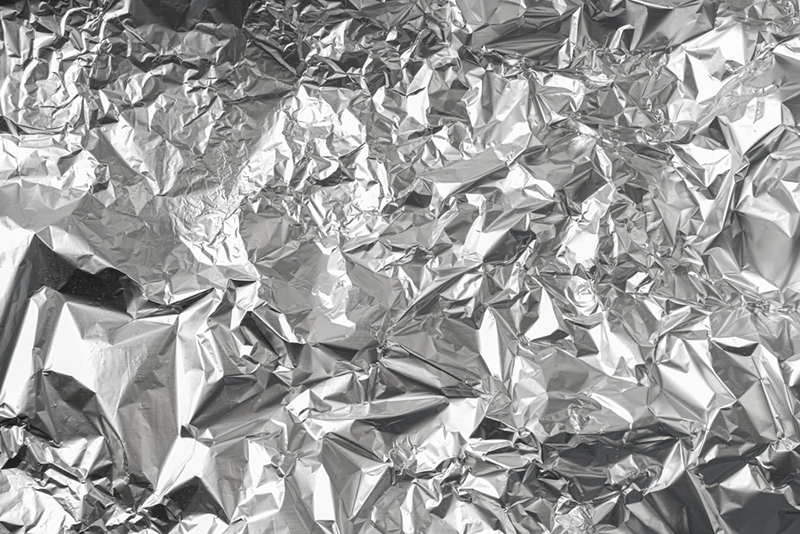
Keep Your Cat Stimulated
A bored, unstimulated cat is more likely to chew on things they shouldn’t, so keep your cat stimulated with toys, a cat tree, perches, battery-operated toys, food puzzles, and obstacles. You can also place catnip in their toys to maintain their attention and keep them away from inedible objects.
Increase Playtime and Exercise
Your cat might be chewing on random items because they’re lonely or have too much energy that isn’t being released. Playing with them and exercising them more may help prevent unwanted behaviors. You can increase their activity by taking them for walks, using laser pointers to get them moving, supervising them outdoors, and teaching them new tricks. Not only will this strengthen your bond, but it’ll keep them fit and healthy.
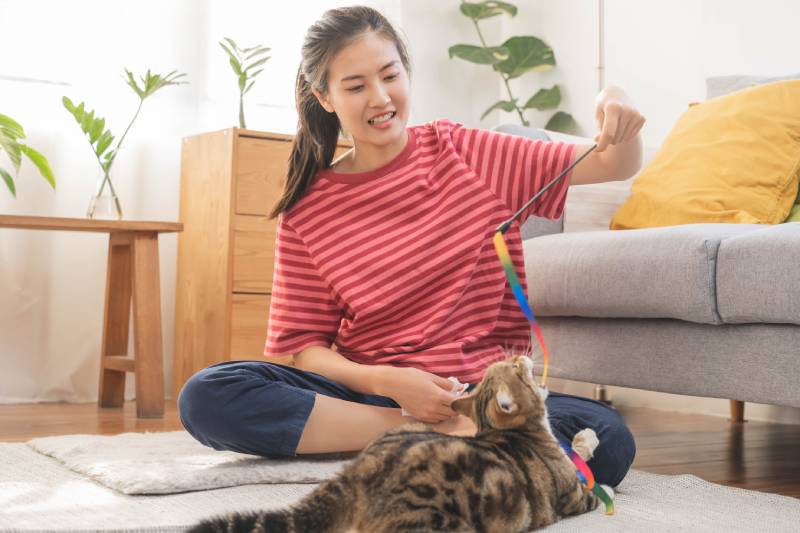
Give Away Dangerous Plants
If you’re a plant lover, it can be hard to part with your leafy children. However, it is necessary for the health of your cat. Thankfully, there are many types of non-toxic plants. You might be lucky enough to find safe types that resemble the plants you had to part with.
If you cannot part with your plants, you might need to move them outdoors and keep your cat indoors. Or hang them from the ceiling, where your cat has no way of accessing them.

Conclusion
Cats are known to let their curiosity get the best of them and lick and nibble on things they shouldn’t. This behavior is common and quite normal. However, it isn’t normal for cats to eat nonfood items and target them specifically. If they are showing signs of this behavior, they may have a severe case of pica. Weird things that cats tend to eat are plant material, cords, toys, materials, cat litter, and human food. If your cat is obsessive about eating these types of items, it is important to get them checked out by your vet and remove those target objects from their environment.
Featured Image Credit: Natalia-Kopylcova, Shutterstock

